Dispatches Do Brasil: Compact SUV Fever

Like it or not, compact SUVs, particularly B-segment vehicles, are the segment to be in right now. They may be anathema to enthusiasts in the developed world, but in developing markets, their is no hotter property. In Brazil, where the Renault Duster and Ford Ecosport have reigned supreme, the market has just gotten a bit more crowded.
Launched in 2003, the compact SUV may well be a Brazilian invention. In Europe, Ford had launched a micro minivan thing based on the Fiesta of the times and it was offered to Brazilians as, confusingly enough, the Fusion. Ford do Brasil took one look at it and declared it not good. But using that experience, they played around with the idea, squared off the lines, made them butcher and arrived at something any Brazilian would recognize as a “jipe”, a Portuguese version of the Jeep name that came to symbolize that special kind of car. The EcoSport was Ford’s jipe and it is credited with keeping Ford alive in Brazil based on it almost doubling Ford’s then withering participation in this market.
Competitors played around with the idea, showing off various concepts at different times, but only at the end of 2011 would a direct competitor arrive. It was the Renault Duster. Larger than the EcoSport, it soon took the sales title from it, losing it again when the re-styled, present-Fiesta-based EcoSport was launched. No matter, both cars proved the market was hungry for such things.
Now in 2015, Jeep is making a big splash with the Renegade. It has set off the blogsphere and apparently has what is takes, from price to availability. Being that Jeep is an FCA brand, and that Fiat is well established here and present in every nook and cranny in Brazil, the Renegade has sparked a renaissance of the Jeep brand. There were 45 Jeep dealers in Brazil last year, and at launch there are now 120. Until the end of the year, there will be 200 of which 150 will be exclusively Jeep.
Honda meanwhile has been more discreet with its launch. They made their compact SUV, called HR-V, available at dealers even before allowing the press to drive the car. Honda has about the same number of dealers as Jeep will have until the end of the year, but is of course dwarfed by FCA’s presence in this country.
For both makers, however, this is a very important launch as evidenced by the presence of top suits in Brazil. The General Director for Fiat Latin America Sérgio Ferreira is highly optimistic and has a good grasp of what the market wants. He highlights that this is the first Jeep factory out of the USA. It consumed an investment of 7 billion reais to be made and will have a capacity to build 250,000 Jeeps that will also be exported to other South American markets.
Ferreira points out the main competitors for the Renegade. He cites the EcoSport, Duster as well as the less succesful Chevrolet Tracker and Mitsubishi Pajero TR4, besides the new Honda. He stresses however that the Jeep will not only attract compact SUV buyers, but that it will bring in new consumers into the segment. According to him, SUVs have a global market participation of 18% while in Brazil it is just 9% and he believes the market is hungry for more. He said, “this is not a hole in the market, this is an ocean [of opportunity]”. He said Jeep is strongly focused on the after market, too. “We know how much it costs to keep a Duster or an EcoSport and our prices will be aggressive” and that 80% of Renegade parts come from Brazilian suppliers. He points out that the Renegade will not sell on price alone. Depending on version and trim, the Renegade has potential to seduce buyers looking for comfort as well as adventure.
Nahoisa Morishita, who was the leader of the HR-V’s global development project doesn’t seem to be so attuned to the Brazilian market. He speaks of the HR-V as a “superior” product and specifically cites the EcoSport and Duster as non-competitors. According to him, “taking into account an international competitor we can say it [the HR-V] is comparable to the Nissan Qashqai. In functionality we have as a reference the Audi Q3. In other words, though compact, it is a luxurious car and of a highly superior quality”. He stresses that the car was developed keeping in mind market demands in global markets such as the US and China. As evidence of the superiority of the car he cites safety, driveability and the presence of such items such as an electronic parking brake, “only available in superior cars, like BMW” (forgetting that the Renegade, for one, offers this, too).
The two cars are of course different, and do look more modern than the Renault Duster though Ford EcoSport in in the running in this aspect. The two predecessors start off quite basic, but have very good equipment levels in higher trims. Both EcoSport and Duster start off at around 50 thousand reais and top off at 70 almost 80. Base engines in both are 1.6 units and top trims get a 2.0. The Ford has a Powershift DCT automatic while top trim Dusters get an old 4-speed auto. Both offer 4×4 versions.
The Renegade starts off at 68 thousand reais in its Sport version and maxes out at 117 thousand for the Trailhawk. The base engine is a Fiat-built ecoTor-Q 1.8 16 V that produces 132 hp and can run on both Brazilian gasoline (E27-ish) and ethanol (E100). In all versions (except the top trim), that can be coupled to a five-speed manual or a 6-speed auto. All versions can get a 2.0 turbodiesel that puts forth 170 hp and is mated to the 9-speed already available on American Renegades. All version also go above and beyond what is usually on offer for the Brazilian market. Besides the trivial, there are more airbags, ABS, and diverse electronic aids that help the driver.
Shorter, but wider and taller than the Honda HR-V, the Renegade has a design that harks back to the original Jeep. It has attracted quite good evaluations from the public though some balk at it saying it is cartoonish. The Jeep offers a wide variety of colors even in the Brazilian market and promises to happily give our streets a splas of color. Though they don’t give an exact number, they cite leadership of the compact SUV market as their ambition. They affirm pre-orders has made them step up production at the new factory.
The Honda HR-V meanwhile takes another view on design. Honda affirms there are traces of a coupe on the top part of the vehicle and that it is all SUV on the bottom part. The lines are decidedly more “urban” and might appeal or not to a more “serious” buyer. And that is good since in Brazil has absolutely no off-road appeals at all. Besides the lower ride height than all competitors (including Duster and EcoSport),4×4 traction is not an option on any Brazilian HR-V. All HR-Vs will be front wheel drive only and will sport the same 1.8 16v engine already used by the Brazilian Civic. It too can drink Brazilian gas or ethanol. That engine will couple either with a six-speed manual or Honda’s worldwide CVT. Starting off at R$69,900 ($21,620) and will top off at R$88,700($27,370). Only the lower trim level will offer the manual, while the intermediate and top trim will only come with the CVT.
Taking a step inside, the ambiance is more somber than the Renegade’s, while more elegant than either the Duster’s or EcoSport’s. Hard plastics are harder to find here than in the other cars while fit and finish is undeniably excellent. In typical fashion though, the HR-V is quite stingy with equipment levels and such things as unpainted window buttons are found. Sharing 50% of its parts with platform brother Fit, the magic Honda seats are also available, making it a clever car with a wide array of packaging possibilities.
The HR-V is longer than either Ford EcoSport and Jeep Renegade and enjoys a longer wheel base than both those competitors, it is shorter, less tall and has a smaller wheelbase than the Renault Duster however. It is only wider than the EcoSport (by 1 cm). It is also less tall than the Renegade.
Due to capacity constrictions at its Brazilian units, at first Honda will cut back on City, Fit and City production to accommodate the HR-V. Honda claims the sales target is of 50 thousand units. If this is reached, they will outsell both “non-competitors” EcoSport and Duster. With Jeep wanting to take the lead in this segment, and the declining market, that target can be considered quite ambitious.
The compact CUV market in Brazil is now on fire. With four big competitors in the ring, it will be hard to forecast the winner. At this level of the market, consumers are somewhat less price sensitive and look for something more. The Ford EcoSport has the tradition and pioneering position in the market, a design that is modern and the possibility of very high equipment levels. The Renault Duster offers a more rugged design that is attractive to some, less equipment than rivals, but is bigger than most of them with undeniable internal and boot space superiority. The Jeep Renegade uses and emotionally appealing design that polarizes more and challenges people to love it or hate it with a plethora of personalization possibilities, the most variation in engines and transmission options, versions designed for city and even possibly heavy off-road use and the attraction of being the first Brazilian Jeep in 32 years. The Honda HR-V possibly appeals to more grown up people in its modern aesthetic, a proven drivetrain, and the big H out in the front and its promise of superior reliability.
Who will come out on top? Stay tuned.

More by Marcelo de Vasconcellos
Latest Car Reviews
Read moreLatest Product Reviews
Read moreRecent Comments
- Formula m How many Hyundai and Kia’s do not have the original engine block it left the factory with 10yrs prior?
- 1995 SC I will say that year 29 has been a little spendy on my car (Motor Mounts, Injectors and a Supercharger Service since it had to come off for the injectors, ABS Pump and the tool to cycle the valves to bleed the system, Front Calipers, rear pinion seal, transmission service with a new pan that has a drain, a gaggle of capacitors to fix the ride control module and a replacement amplifier for the stereo. Still needs an exhaust manifold gasket. The front end got serviced in year 28. On the plus side blank cassettes are increasingly easy to find so I have a solid collection of 90 minute playlists.
- MaintenanceCosts My own experiences with, well, maintenance costs:Chevy Bolt, ownership from new to 4.5 years, ~$400*Toyota Highlander Hybrid, ownership from 3.5 to 8 years, ~$2400BMW 335i Convertible, ownership from 11.5 to 13 years, ~$1200Acura Legend, ownership from 20 to 29 years, ~$11,500***Includes a new 12V battery and a set of wiper blades. In fairness, bigger bills for coolant and tire replacement are coming in year 5.**Includes replacement of all rubber parts, rebuild of entire suspension and steering system, and conversion of car to OEM 16" wheel set, among other things
- Jeff Tesla should not be allowed to call its system Full Self-Driving. Very dangerous and misleading.
- Slavuta America, the evil totalitarian police state
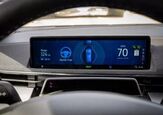
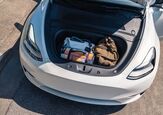














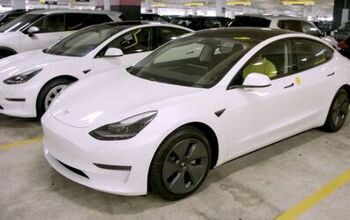


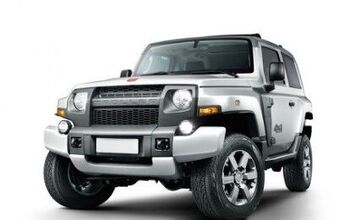
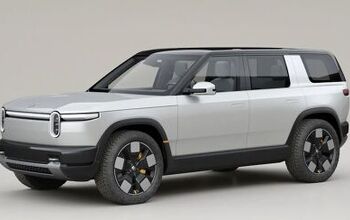


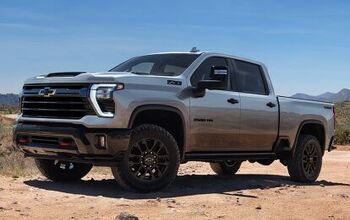
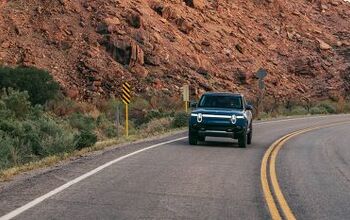

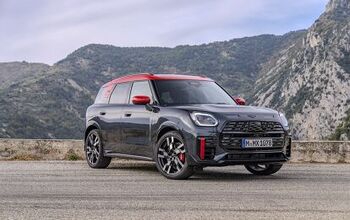
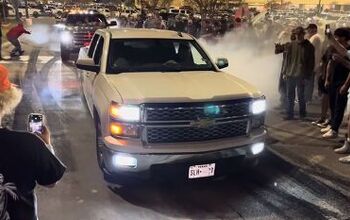

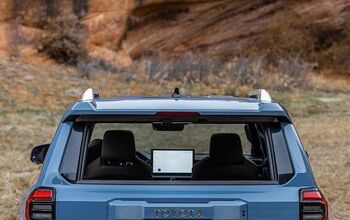
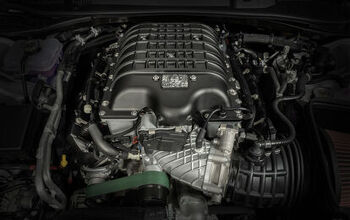

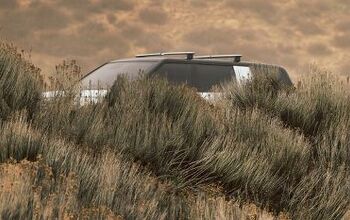
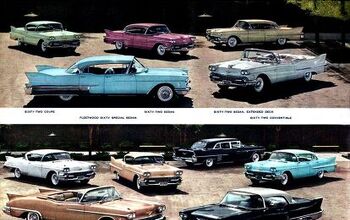
Comments
Join the conversation
Hi Marcelo, it's good to read your posts again. Here in Uruguay we're seeing some kind of small SUV boom too. The Sandero Stepway, although not strictly a SUV is a massive hit here, you see them everywhere. And the Duster and Eco are doing quite well too, I think they are stealing sales from C segment hatchbacks at least in this country. Women love their high driving position and guys well.....we just buy what comes into fashion. Not me however, I still dream about a new Golf G7 with the 1.4 TSI engine, a car that seems to have been quite less successful than it deserved to be. Dull looking to many, and it's not a SUV so we rather go for a Duster or Eco that are far more fashionable and have more "road presence" than a regular hatchback. Unless for the car nuts like me, most people won't care about driving dynamics and superior technology of a Golf, they just choose the mini SUV because they are in full fashion and maybe for the higher ground clearance that helps coping with our terrible roads.
And it seems that VW is missing this party too, I haven't heard of the Taigun recently. It would not be smart at all for them to pull the plug on that one, maybe they have delayed it for some reason I don't know